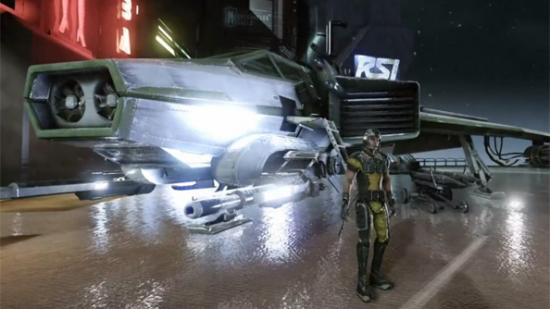2012
has been the year of crowdfunding and Star Citizen is its champion.
Having now raised nearly $7m through the game’s official site and the
hugely popular Kickstarter, creator Chris Roberts has more funding than
he ever thought possible. I spoke with him about some of his plans for
the game’s combat, both dogfights and boarding actions, about
crowdfunding alternatives to Kickstarter and about the weight of
expectation that sits upon this project.
On Kickstarter
PCGN:
A few months ago, crowdfunding was Kickstarter, basically. Then you had
things like Project Obisidan adding the PayPal option and I wonder if
you think we’re moving away from just Kickstarter, with people able to
do it increasingly how they want to.
Chris Roberts:
I don’t necessarily think we’re moving away, but it’s interesting
because I think we’ve raised £4.756m on our site, which I think is more
than has ever been raised on Kickstarter alone. I think our site did
really a large amount of volume. I don’t think that Kickstarter’s over,
but people may decide that there’s more than one option.
Kickstarter
has a really interesting sense of community. When I’m on it I don’t
just look at my own stuff, I look through everyone else’s stuff and I
look over at what’s happening at Elite, or what’s happening at GODUS, or some other smaller ones I’m interested in, like Limit Theory. That’s impressive for one person, I’m actually fairly impressed with that!
I’m
curious. That’s why I don’t just read the game trade stuff, like all
the people in the business, I also read the Gamespots, the IGNs, you
guys, the Edge site, Eurogamer, because that’s really who your audience
is. I noticed on Kickstarter they also have this community and it’s as
much about going and finding things that they believe in as it is about
playing the game at the end of the day.
For
instance, when Project Eternity ended, a huge amount of the Project
Eternity folks came across onto our Kickstarter, and they were all very
into it and bonding. It’s almost like Kickstarter is this social
network. I notice people make friendships on our comment boards and I’ve
seen it happen on other projects because, I guess, you have this common
interest, you like this kind of game.
The
way I feel is, you’d be silly to ignore Kickstarter and you’d also be
silly not to have options on your site to give people the opportunity to
back it if they don’t want to use Kickstarter, or can’t. I think you’ll
probably see more people doing what we did, which was dual options, and
I think Kickstarter is fine with that. For me, it’s all about choice.
Let the people back the project how they want to. The fact that they’re
backing you is, thank you very much! I’m not going to tell you that you
have to do it this particular way.
PCGN:
Several indie developers have told me Kickstarter is better for people
bumping into your projects by accident because they’re browsing. It does
have that networking aspect.
CR:
Definitely, I would say that if you’re not someone like me who has a
name, then you would probably be foolish to avoid Kickstarter. I can see
where my referrals came from and far the largest amount of referrals I
had came from within Kickstarter itself.
You’re
completely right, there’s a community that hangs out on Kickstarter,
saying “What’m I going to back?” They’re into it and what they’re having
fun doing is deciding what games are going to be made, on a grassroots
level, where typically they never did [before].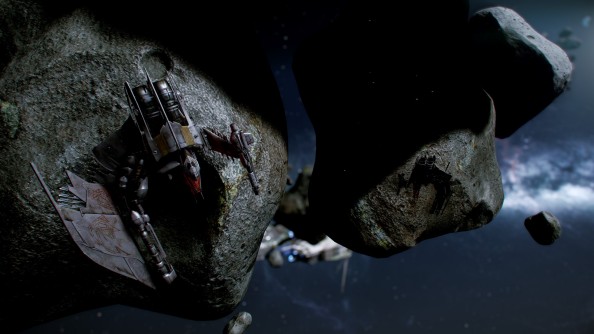
With
Limit Theory game, I think if he’d put up his own site, he’d have
probably collected two dollars, but what’s happened is a couple of
people have looked at it, said “Hey, this is cool,” and shared it. If
you’ve got something really good, Kickstarter’s probably going to be the
best ways for it to get seen. The biggest challenge for anyone
crowdfunding is how you get yourself in front of as many eyeballs as
possible.
On Star Citizen’s combat
PCGN:
I was going to ask you a little bit about all the extra content.
Obviously you started with an initial pitch, but as you’ve hit goal
after goal, you’ve added more ships, more systems. That sounds like an
additional challenge. Do you not worry that’ll substantially lengthen
development or make things potentially more complicated and more
difficult?
CR:
Not particularly, mainly because it’s a little different for me. I
spent one year working on that prototype that I sat and showed you, and I
was actually doing a lot that it wasn’t just the prototype and putting
the program together. A lot of it was working out how we build
spaceships this complicated, characters this complicated. How long does
it take? What’s the process? I actually have a lot of data in terms of I
know how much a spaceship costs me to make and I know how much a
character costs me to make, I know how much a system costs me to make
and how long it takes. At that level it becomes a matter of the money
you have to spend. Those stretch goals were fairly easy because there
wasn’t a lot of risk in it. We were going to have ten spaceships that
you could fly around in the game, now it’s more like fourteen or
fifteen.
It’s
more a matter of volume and a lot of the things we had as our stretch
goals were all things I had on my plan of what I wanted to do, but maybe
I wasn’t going to get to do them all, to have them ready at launch
because I wasn’t going to have enough money or resources to get to all
them.
I
think what we have now is this is what my vision was of what I wanted
if someone was saying “Here’s a blank cheque, Chris.” I feel fairly good
about offering them because we didn’t offer anything that was a whole
new system to what we’d already planned. We’ve just added a lot more
content, and texture and detail to that content.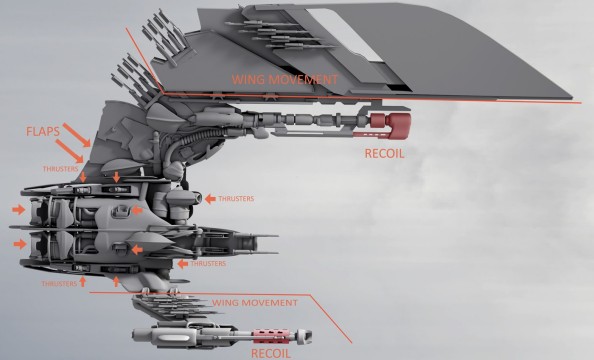
PCGN:
I also wanted to clarify some of the technical side of it. You
initially said to me you’ve got some of this Demon’s Souls, Dark Souls
kind of thing where players can drop in sometimes. You’ve since
extrapolated and said that there will be some instancing and because of
bandwidth issues we can’t have thousands and thousands of players in the
same place. Is this something that you’ve already had a chance to test
yourself?
CR:
It’s definitely something that I designed and developed in the year
that I was prototyping, so it’s not implemented as in you can jump in
right now, but there was a fair amount of technical design that was
spent on the system.
Essentially,
the vision of it is that, in the heaviest multiplayer situation, if
you’re someone who set their game setting to PvP, you’ll probably be in
instances that are similar to the instances you can have in World of
Tanks or Battlefield, with that number of players. I don’t quite know
what the maximum number of players is because that’s one of the reasons
we’ll be doing the alpha multiplayer dogfighting in twelve months, to be
able to see how much we can push and balance in an environment where
there’s not a bunch of other things we’re also worrying about.
I’m
going to see how many I can get into it. On the theoretical side, it’s
pretty easy to do [numbers like] other games do right now, because the
resolution of the data’s about the same. I’d like to see if I can get a
few more in there, but I don’t know until we’ve done it.
The
idea is that it’s dynamically matchmaking, putting people into
instances with other players instead of having NPCs. If you’re more of a
PvE player, you’ll have more NPCs in those roles instead of other
players. That’s where the Demon’s Souls thing comes from, it’s all NPCs
but another player can invade or come to help you.
PCGN:
I was wondering about the kind of bandwidth demands it’ll be making.
Obviously graphically it looks wonderful, and in a year or two’s time
many of us will be getting bigger graphics cards as we’re PC owners and
that’s one of the reasons we buy PCs, we like to push the hardware. But
broadband is a different thing and I’m wondering if Star Citizen’s size
might push things a little more, or you may have stricter requirements
with all that data flying back and forth.
CR: That’s where the rubber meets the road with what I’m doing right now,
that’s the stuff that, theoretically, we’ve done the design on paper.
I’m building on top of the CryEngine, which already works for
multiplayer and it has the client-server as part of its engine.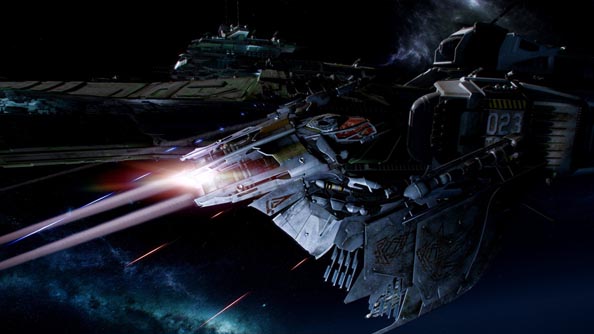
There’s
a couple of things to consider. One is the lag, the ping times you’re
going to be dealing with, and the second is how much data is flying back
and forth between the client and the server because in Star Citizen we
want to be server-authoritative because otherwise people can cheat or
hack their machines. The question is, what is the minimum amount of data
that can go from the server to the client machine to have the physical
simulation that we’re doing and have it be as detailed as we’re going
for.
We
do have one advantage that, in space, there isn’t a lot of environment.
You have a lot of issues in first-person shooters in a city or a jungle
in Battlefield where you’re in a huge environment that can fall apart.
Space is empty, so you don’t have that, and the objects you’re
simulating are all rigid body, which are much simpler physical
simulations than soft body.
I’ve
got a high hope that, even though the fidelity is high, on a bandwidth
side it’s not going to be any more than you’ll get on a current shooter
like Battlefield and maybe even less, which will allow us to add in more
players. But I don’t know until I try and get 60 players on, or I try
and get 80 players on. That’s what we’re working on right now.
PCGN:
Do you think that’ll be a similar number for the first-person sections
on ships, too? We’re talking about boarding actions now too.
CR:
Again, the nice thing about space is you’re bifurcating areas of it, so
even if we had 60-odd people in an instance, or 100-odd people, there
shouldn’t be a case where 60 or 100 of them are all aboard the same ship
at the same time. Essentially what you’re having is pockets of
simulation, so if people are in a boarding action, twelve people or 20
people in that action., you could think of that as a mini instance
within a bigger instance.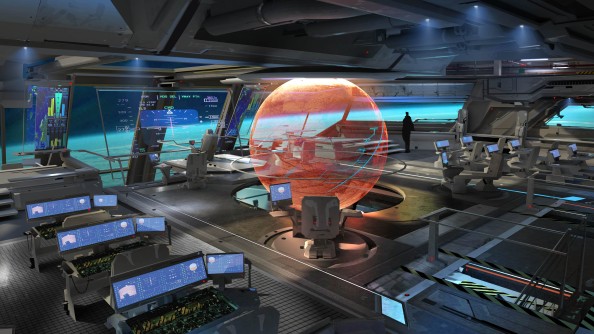
Basically,
the issue is that every time you’re adding an extra person in, you’re
adding extra work overall. Every other player has to know what that one
player is doing, so the data increases that way. Because we’re in space,
we can say “These guys are flying their spaceships, so don’t worry
about them, but these guys, duking out inside the bigger ship, I can
worry about them.” There’s an advantage to the environment that we’re in
that allows us to take some optimizations that you wouldn’t be able to
do in Battlefield where it has to handle 64 people in the same room.
PCGN:
Can I clarify how the boarding actions will work? You have two capital
ships, they meet and marines run back and forth between them. Can you
take over a ship to find that it’s been severely damaged by the enemy
trying to scuttle it rather than capture it?
CR:
You have to be able to disable a ship to board it anyway, so a ship
can’t be flying around and have you board it while it’s fully
functional. You have to disable it in terms of beating its shields down
and doing a certain amount of damage so, essentially, it’s a hulk, and
if you board it and capture it, you have to spend some time fixing it up
to fly it off again.
PCGN: Are the crew on the ships are hurriedly repairing it at the same time and may possibly escape?
CR:
If you repel the boarders and you get some time, then you should be
able to fix your ship, or if some friends turn up and help you fix it,
you may be able to get it out of there.
The
idea is that the bigger ships, the capital ships are almost like
floating persistent instances in space. You can’t take the down and land
on planets. You can take the smaller ships down and land them on a
planet, and when you land it’s safe, but if I manage to capture myself a
cruiser or something, I’m going to have to find a place to park it in
space that’s safe, or it’s at risk of being boarded by someone else. It
doesn’t get “turned off” in the way that normal ships do.
PCGN: And what happens if you’re killed during a boarding actions, if your actual character, rather than your ship, is eliminated?
CR: That’s a good question, because you’re saying that your ship’s floating, pristine, but you got killed in a boarding action?
PCGN:
Possibly. You’ve talked about ships being insured and obviously a ship
can be destroyed but pilots, Wing Commander-style, could eject. In a
gunfight, it’s a little different when the actual bullets are hitting
you rather than your vessel.
CR:
Well, it’s not fun to have permadeath, so I think if you die in a
boarding action you’re going to end up in much the same way that you end
up if you lost your ship, back on the closest safe planet. This is
something to be decided, whether in that particular case is your ship
still intact, or is it a case of you lost your ship and you get your
base ship back, but you wouldn’t get all your upgrades back. That really
would be a matter of deciding what the penalty is for failing on a
boarding action. I would be inclined to think that if you failed on a
boarding action you’d end up on the closest safe planet, maybe with your
ship intact, unless someone took it over while you were boarding.
PCGN:
Would it be possible for people on your side, your allies, to look
after your stuff and potentially make sure it gets back to you?
CR:
Potentially. There’s a bunch of edge cases in all these dynamics.
There’s a bunch of stuff where it’s pretty simple to say “Okay, this is
the way it works,” and there’s some stuff where you’re “Okay, how
correctly do you want to simulate this?” The most realistic way is to do
something like the real world, where you die boarding something and
that’s it, you’ve got to start all over again, but I think it would be
good if you were boarding something and you died during the boarding
action, and no-one else has taken over that ship, you’d spawn back on
the last safe planet that you touched down on. You’re there, your ship
is there and the fiction is that your friends brought your ship back to
you. You were heavily injured in the boarding action, but they managed
to get you fixed up.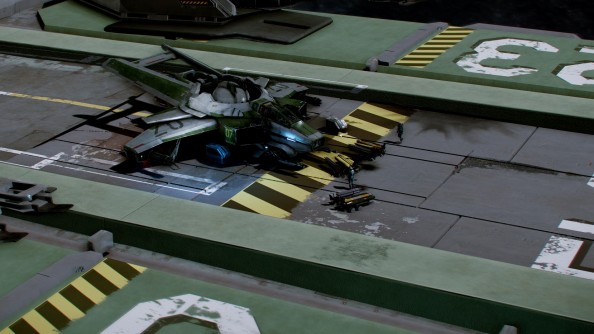
On the enormous response to Star Citizen
PCGN:
I was going to ask, how do you feel now compared to a couple of months
ago? When we first met, the way you presented Star Citizen to me then
was very much as if you weren’t sure if people were going to go for it,
but you’ve had an enormous response. What does it feel like and what’s
your worldview now?
CR:
It feels great. Part of the reason I was unsure was because I was
obviously gone from the industry for quite a long, so I was going “Do
people remember me? Do they care?” And it was really nice that they did.
I think that when I was doing the press tour I had a little bit of a
sense because I was seeing a bunch of people that, as journalists,
usually start as games players anyway, and everyone seemed to be pretty
excited for me to be coming back, so I was hoping that would carry
across to the general gaming audience.
It
was really nice and awesome, but at the same time as it’s invigorating,
it’s probably a little scary. We now have almost 100,000 people signed
up to back this project and it’s two years before it’s going to be
finished. I feel like I’ve got a pretty big responsibility to make sure
that I’m delivering a really good game while also making sure that
everyone who has done this is involved in the process. That’s very high
on my list of stuff because it’s not just “Okay, I’ve got the money,
thanks very much, I’m off to make the game.” I feel like I’ve go a
contract with them as backers of this project. I actually have a lot of
fun reading the forums because everyone is so excited, they’re already
doing their fan art and fan fiction. It’s really, really, really
exciting and fun, and all that’s fantastic and it makes me feel really
good, but it also makes me feel like “Okay, I’ve really got to deliver
for these people and give everyone a really good experience during the
process.”
I
feel like, if I do this properly, people will feel like they’ve got
their money’s worth, so to speak, even before the game has come out.
They’ll be like “This was an awesome way to do it, I got an insight into
how a big game like this gets made, my voice was heard, I got to play
stuff along the way and balance the game, I really feel like I’m part of
this community.” That part I’ve really, really embraced and as I’m
building up the studio, as I’m bringing in people and building up to the
level I need to deliver the game.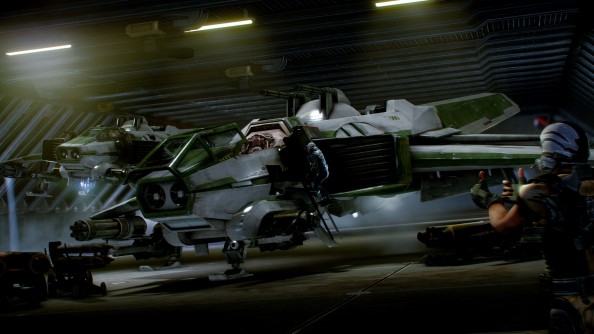
From
my standpoint, if I was at a publisher, I have to show the publisher
cool stuff every month, or do my milestone show and tells. Half the
time, when I’m doing it to publishers, the executives aren’t games
people, so you feel like you aren’t really showing it to the people that
love it. What I’ve been telling my development team is that we don’t
have a publisher, but we’ve got 100,000 people that are taking the role
of this publisher and its our duty to treat them the same way we would
our publisher, give them reports of where our milestones are and all
that level of information. I think it’s motivating for the team, too,
because with a publisher I can say “Oh, it’s going to take a bit
longer,” with 100,000 people I’d better have a damn good reason if I’m
taking long!
We’re
still doing two to three fiction updates on our site every week, we’re
going to do a weekly webcast for our subscribers, we’re trying to do a
huge amount of content for people during the development process and
really give an insight. That’s something that I haven’t done in the
past, with the different model, the old way, but it’s actually something
I find pretty invigorating.
On being a financially independent developer
CR:
One of the fun things for me is how it feels like I’m figuring stuff
out as I’m going along. That reminds me very much of when I first doing
the early stuff with Origin in the late 80s and the early 90s. We felt
like we were figuring out how to do things in the industry, so it’s fun,
it’s exciting. This whole crowdfunding thing has been a huge education
for me. I think there’s things that I think we did well, things I think
we could’ve done better.
PCGN: It’s a learning experience?
CR:
Yeah, and I like that. That’s why I like the PC, there’s always a new
challenge. I get bored if it’s the same thing again and again, and
that’s why I took a break from the business.
What
I’m building now is something pretty big and it’s going to match up
with anything that a publisher would do, but I don’t have a big campus, I
don’t have the big overheads, the big infrastructure, the sales offices
around the world and everything else. I know, because I’ve been in
those situations, I’ve been part of EA.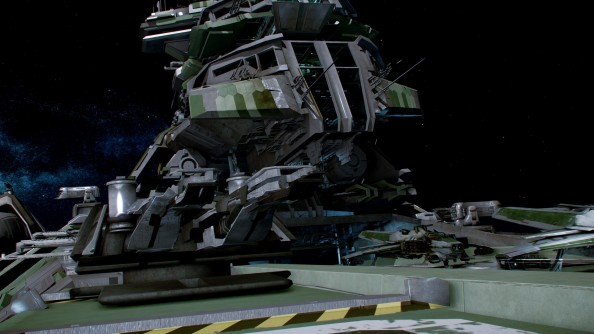
My
[former] company, Digital Anvil, is the best illustration of this. The
fully loaded cost at the time when it was bought by Microsoft was
$100,000 per person. That doesn’t mean that every person was getting
paid $100,000, that was you taking everyone’s salary and overhead costs,
rent and equipment costs, all that, adding it together and dividing it
by the number of people. That’s your average head-count cost, that’s
usually how people gauge their cost.
So,
we were $100,000 at Digital Anvil. The day we were bought by Microsoft,
we went to $200,000 per person and noone got a pay rise. That was
purely because, all of a sudden, being part of Microsoft, we had to
absorb the overhead allocation that you get with them. Freelancer
suddenly became twice as much, budget-wise, on their books, even though
it wasn’t taking any longer and didn’t have any more people working on
it. All those kind of things, that’s the craziness of the big publisher
setup, you just have all this other infrastructure you have to pay for.
If you’re in the kind of independent setup that I’m doing now, you don’t
have the same level of cost. You can have the same number of people and
deliver the same experience but it’s not going to cost you as much.
That’s one of the things that enables me to do what I do, and also why
people get better value out of these kinds of projects on Kickstarter or
elsewhere.
…And on Wing Commander
PCGN: Theoretically, if you could, would you like to buy back the Wing Commander rights?
CR:
Definitely. If I could get Wing Commander back, if it was mine to
control and not EA saying “Here you are, have it for a game,” then I’d
definitely be interested. Part of the thing that’s frustrating is that,
when you create a world and you’ve overseen it for a while, and I had to
sell it when Electronic Arts bought Origin, I can’t go back and visit
that world without their say-so. But they don’t care about that world, I
care about that world.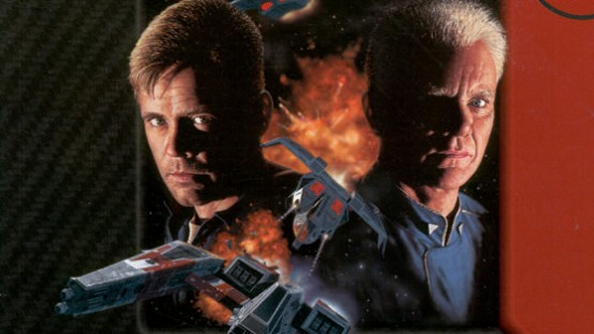
That’s
one of the reasons I’m doing what I did with Star Citizen. This enables
me to control my IP. To me, this is not just one game. This is a world I
want to constantly update and add new cool stuff to and have a
community. I’d be happy if, ten years after it comes out, people are
still into it, still playing it, and it’s moved on and evolved. I want
to be able to be in a position to guide it because I feel like I’m best
suited to know what’s best for the franchise.
If
I had the opportunity to get Wing Commander back in the same way,
that’d be great, but EA has different priorities, so who knows if that
can happen.
